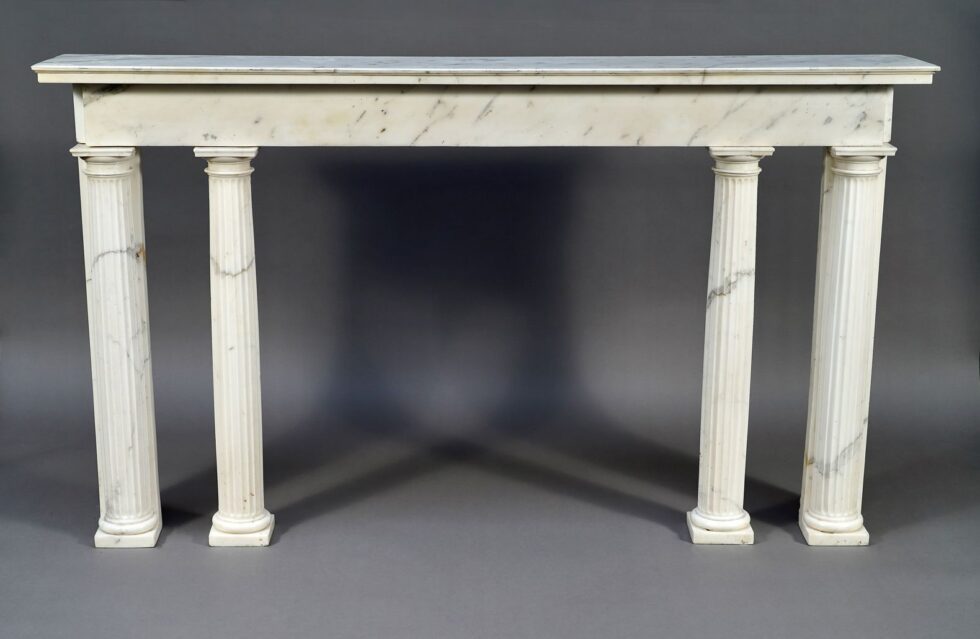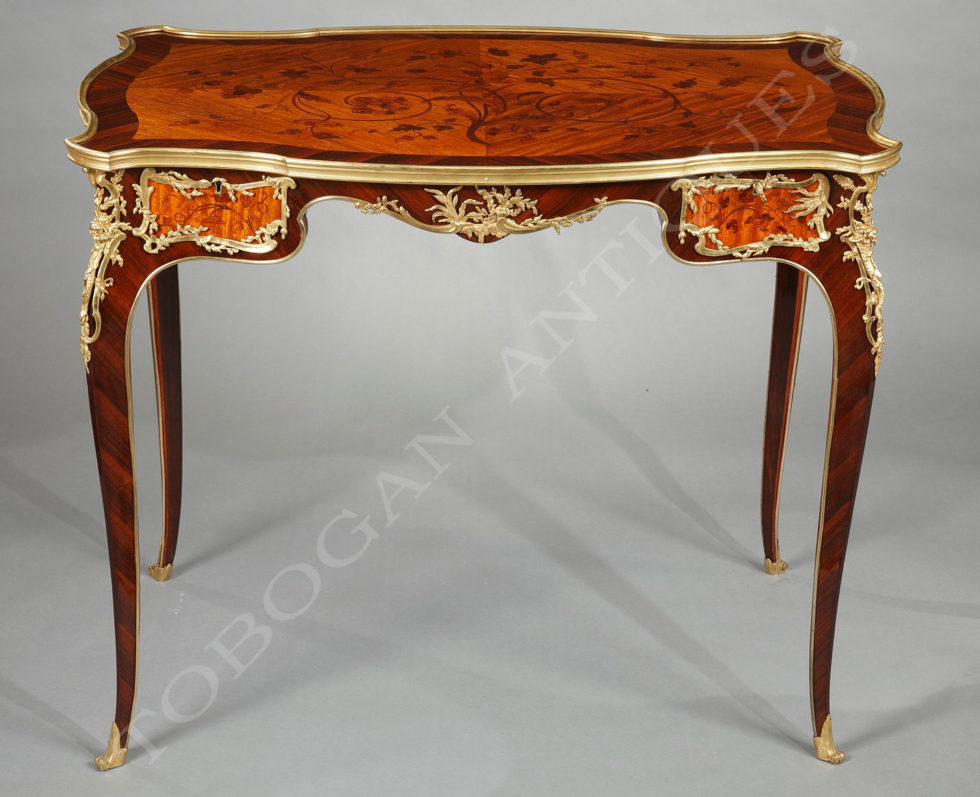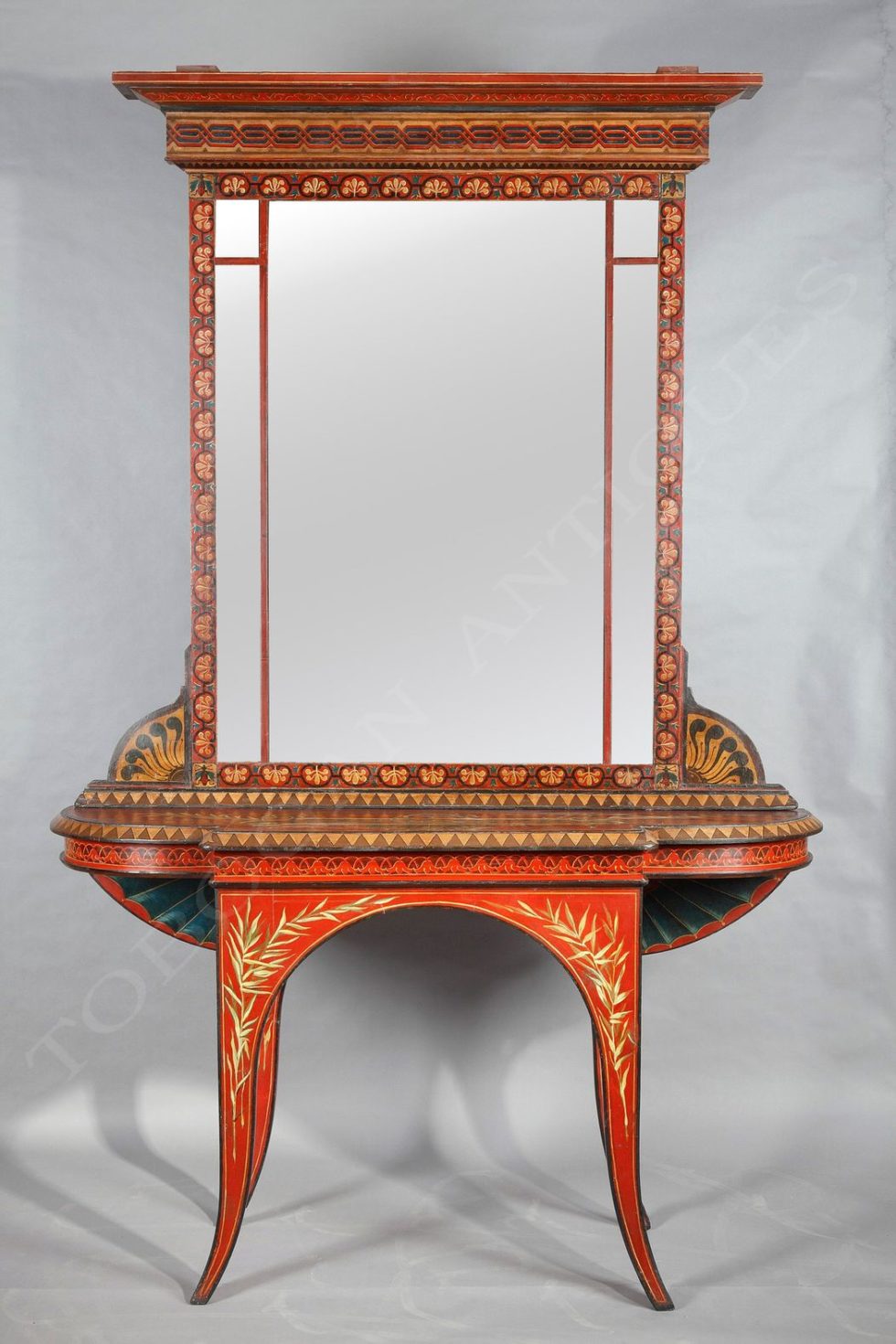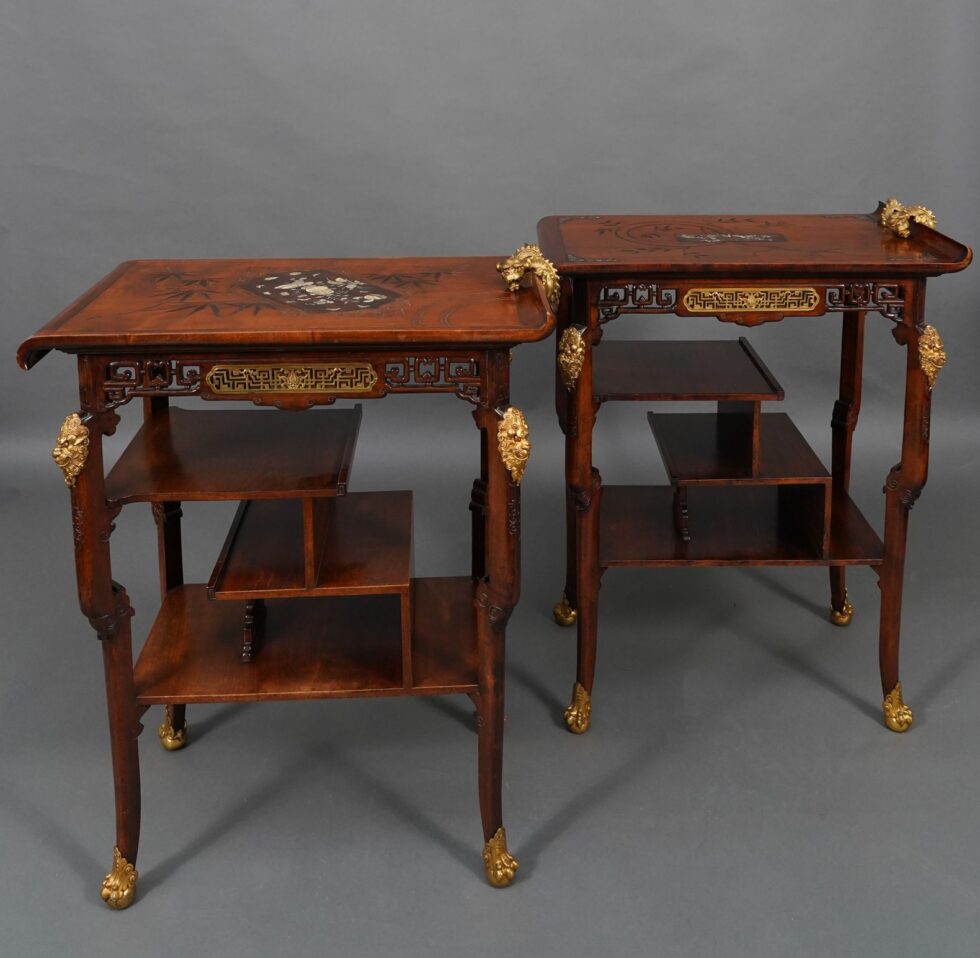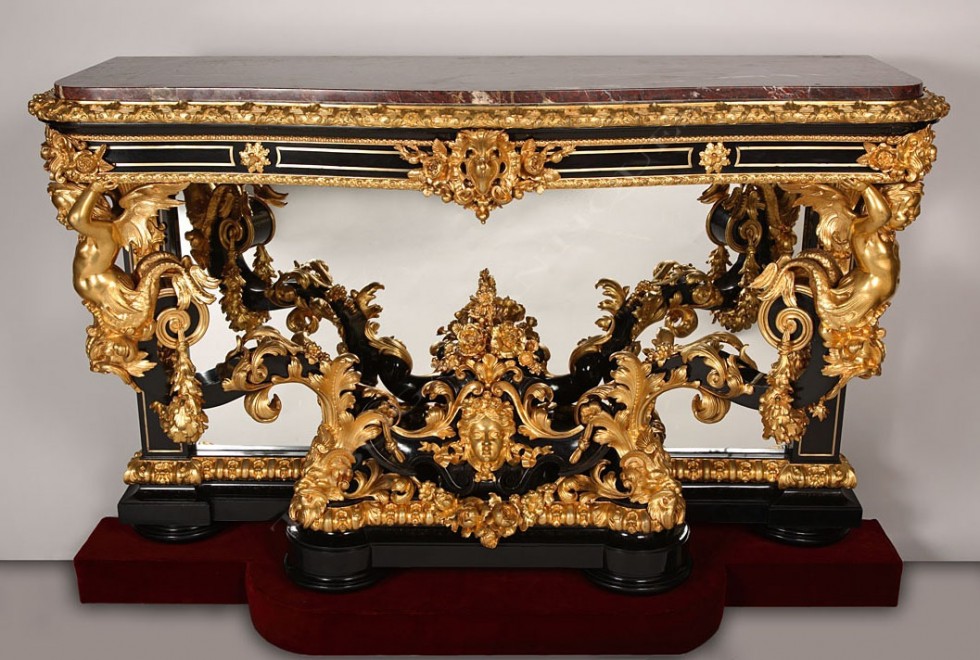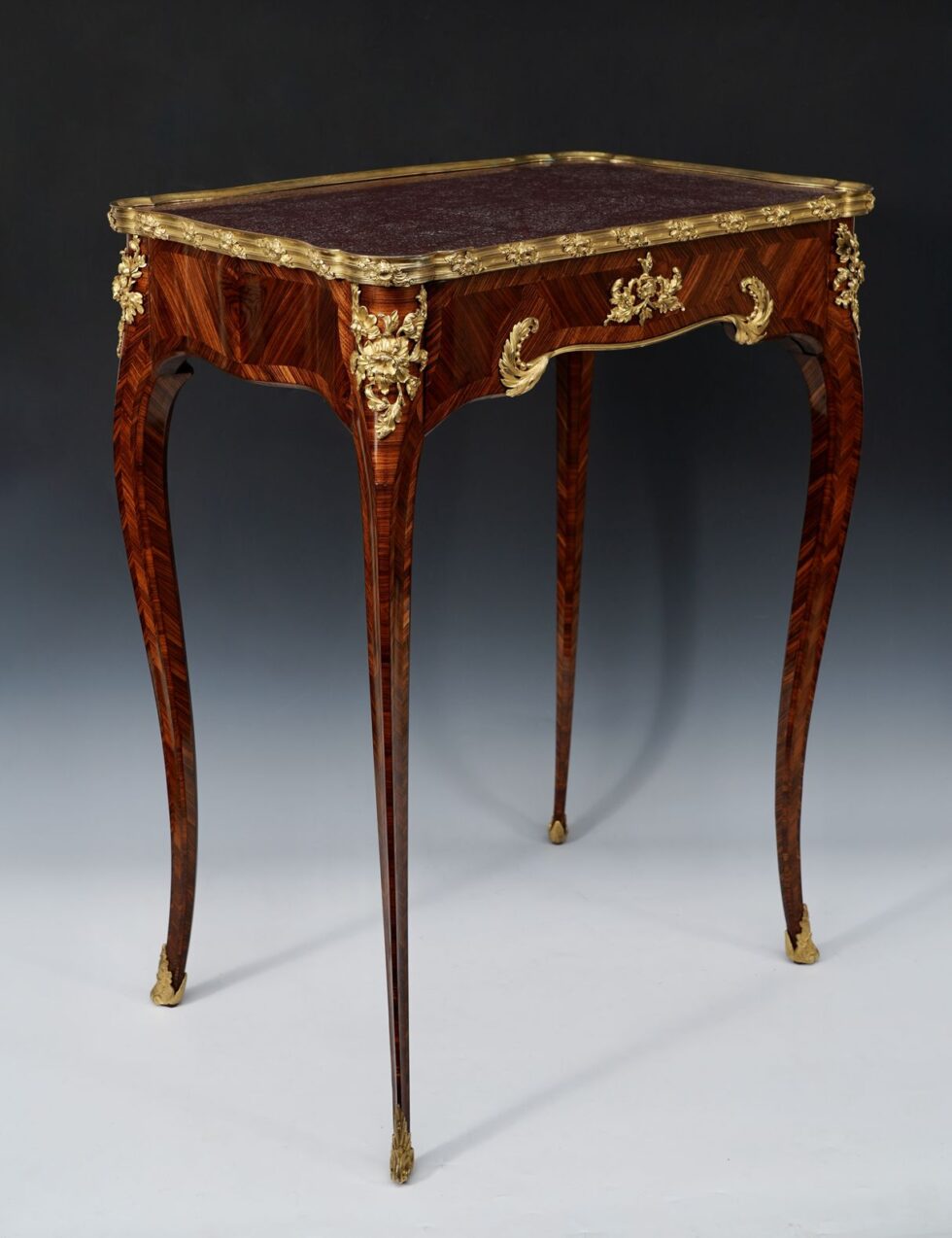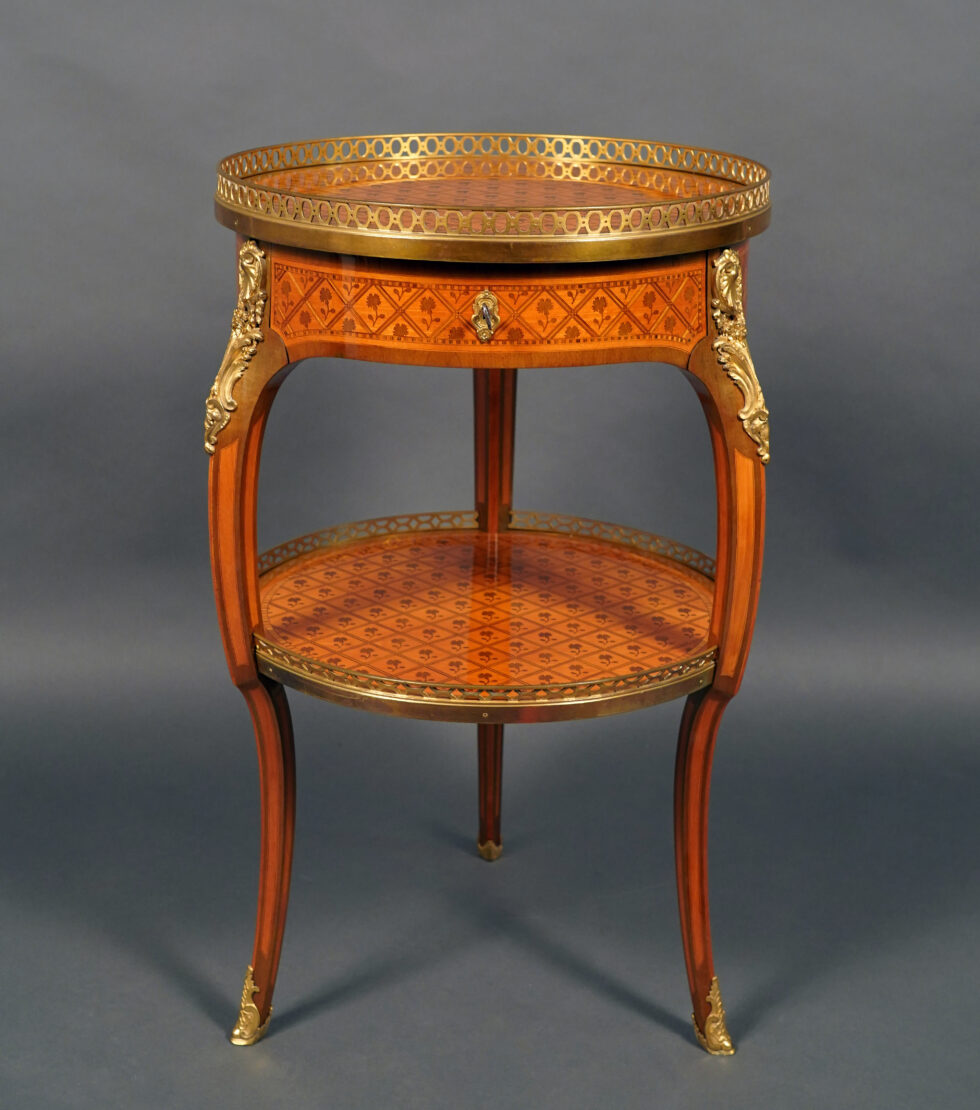ref. 1155/0
C. Balny
Cabinet-maker
(End of the 19th Century)
Japanese Style Games Table
Bearing the inscription C. Balny – Bté S.G.D.G
France
Circa 1900
Marquetry, mother-of-pearl
Height: 73,5 cm (28,9 in.); Width: 60,5 cm (23,8 in.); Depth: 60,5 cm (23,8 in.)
Ingenious and creative Japanese style games table in carved wood. Topped by four foldable panels decorated with flowers, fans, dragonflies and butterflies with a precious wood veneer and mother-of-pearl inlay.
Biography
Camille Balny, third generation of cabinet-makers, founded the “Balny jeune” Manufacture around 1876. He participated at the Paris Universal exhibitions of 1878 and 1889 where he received several silver medals.
Commentary
The roots of the artistic movement known as “Japanism” not only came from Japanese art, but also from Chinese art. Following the Franco-English military campaign led in 1860 against the Imperial army in China, the French troops of Napoleon the IIIrd brought back from the Summer Palace, a part of the Chinese Imperial court treasure, which made up the famous Chinese Museum of Empress Eugénie at the Fontainebleau Palace. The French artists quickly took inspiration from those exotic and sumptuous objects for their creations, as they used to do in the 18th century, when the best French cabinet-makers adapted the Chinese lacquers on the luxurious royal chests.
Many Japanese and Chinese objects and prints were imported to France and all Europe, for which some collectors spent fortunes. England and France contributed actively to the development of this exotic art. At the Universal Exhibition of London in 1862, Sir Rutherford Alcock, the first representative of the British Crown in Yedo (Tokyo), led the Japanese section. In France, with the generation of the Impressionists, the enthusiasm for Japanese art became a true fashion. Architects, painters and interior designers were obviously requested to work on that matter. London and Paris shared that common artistic market: Murray Marks, a renowned London dealer, sold since 1864 in Paris a collection of Chinese and Japanese ceramics. During this period, the South Kensington Museum in London (now the Victoria & Albert Museum) enriched its collections of Japanese artefacts, like l’Union centrale des Arts décoratifs in Paris.
Contact us
Tobogan Newsletter
If you want to be up-to-date with our new acquirings you can sign up to our newsletter.


